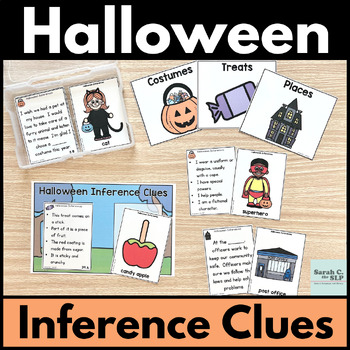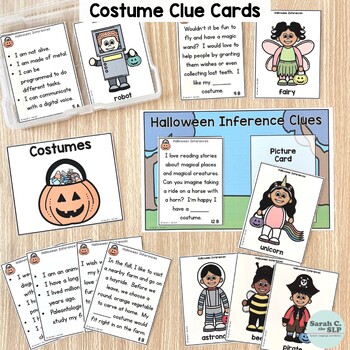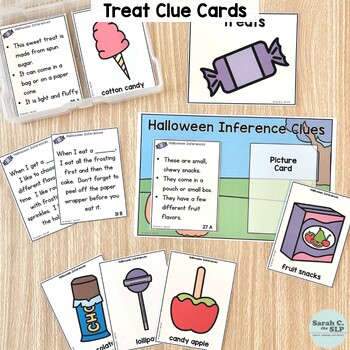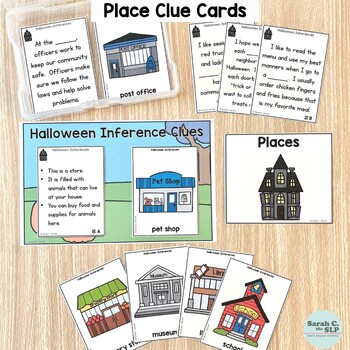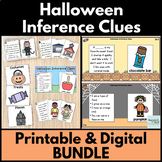Halloween Inference Clues & Vocabulary Printable Activities for Language Therapy
- PDF
- Easel Activity
- Easel Assessment
Also included in
- This Halloween resource asks students to make inferences about costumes, places you can go to trick or treat, and the treats you may receive. Great for October lessons in speech & language therapy or in the classroom. The resource provides strategies for students to use when making inferences,Price $4.75Original Price $6.00Save $1.25
Description
This Halloween resource, for speech & language therapy or in the classroom, asks students to make inferences or solve riddles about costumes, places you can go to trick or treat, and the treats you may receive. The resource provides strategies for students to use when making inferences, picture cards, and two different sets of inferencing activities. Worksheets and a build a jack-o'-lantern activity are also included.
Making inferences can be a tough skill for students with reading, language and/or communication difficulties. Students are often asked to "read between the lines" during reading comprehension tasks and social interactions.
Includes:
- Definition / Prompt Cards (inferencing definition, types of inferences, strategies)
- 2 Decks of 36 Inferencing Question cards (72 cards total)
- 36 Picture Cards - 12 costumes, 12 places, 12 treats
- Communication Boards
- Describe It! Vocabulary Spinners
- Compare & Contrast Card Mats
- Evidence vs. Inferences Graphic Organizer (with editable text boxes)
- Jack-o'-Lantern Game Mats with reinforcer pieces
- Reading Passage Worksheet with follow-up questions (Printable + EASEL)
- 6 Matching Worksheets (Printable + EASEL)
- Black & White versions of all items
- Data Collection Form/Answer Keys
- Reference List
- List of suggested Children's Books to pair with the resource
- Clickable Table of Contents to find pages quickly
- None of the items are spooky or scary
** Easel Digital Activities - Variety of activities ready to be assigned including a decorate a pumpkin drag & drop game (see Video Preview for more info)
** Easel Assessment - Deck A Quiz (10 Question Multiple Choice Quiz)
** Easel Assessment - Deck B Quiz (10 Question Multiple Choice Quiz)
** This PRINTABLE product includes the same material as the Halloween Inferencing DIGITAL Activities resource in my store. Both resources can be found in the Halloween Inferencing Activities BUNDLE.
>> Pair with your favorite Halloween-themed books and activities. <<
Additional Resources:
Fall Fun Vocabulary Activities
Packing for Vacation - Seasonal Clothing Sort
Follow my store for updates on NEW resources:
** Remember to go to your My Purchases page to Leave a Review on each product you have purchased to earn FREE credits to spend on Teachers Pay Teachers!

